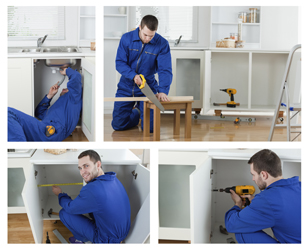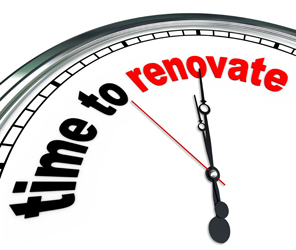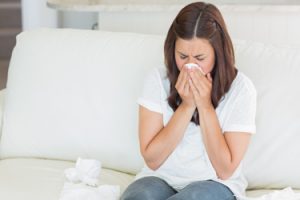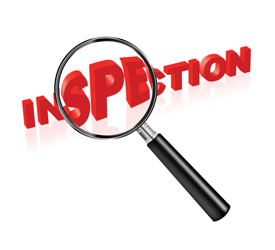
by Eric Brown | Oct 10, 2015 | Health, Indoor Air Quality, Mold Facts, Mold Information, Mold Inspection, Mold Remediation, Mold Removal, Questions and Answers
Top 3 Reasons Mold Sickness Is A Hidden Epidemic!
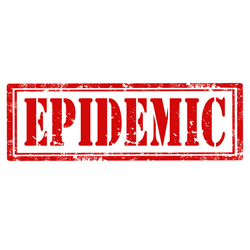
Top 3 Reasons Mold Sickness Is A Hidden Epidemic!
You Could Be Sick From Mold, But Are Not Aware Of It!
Working, researching, and writing about mold since 2011 has taught me one critical lesson: most people sick from mold do not realize that mold is making them sick.
Unfortunately, the burden of determining if mold is the cause of the sickness, is usually up to the patient. This conclusion is based upon over a dozen interviews I have conducted with mold survivors that began in 2013 when I worked with a company in Western Canada and currently with Wonder Makers Environmental as their Marketing Director.
As stated in a previous blog, I have learned five key lessons during these interviews:
- There is a lack of appreciation in the medical community of the impact mold can have on certain individuals.
- Symptoms from mold sickness are broad, leading to multiple mis-diagnosis of patients by many doctors.
- Mold sensitized individuals seek help from multiple medical practitioners because their illnesses continue.
- The mold sensitized individual eventually learns that mold has been the cause of their sickness.
- Because traditional remediation approaches do not adequately address their sensitivities, mold sensitized individuals often are forced to seek alternative shelters.
The purpose of this article is to explain the top three reasons that mold sickness is a hidden epidemic.
#1 Hidden Mold!
One of the major points made by the one hour documentary, MOLDY is that hidden mold is a huge concern. Simply put, the dramatic photos you see showing full-scale infestations of black mold after floods and hurricanes are the exception not the rule.
The seven areas listed below are the most common areas in a home where you will find mold.
Bathrooms and Kitchens
The most common area where you will find mold is under the sinks because of leaks.
Appliances
Another potential source of leaks are your refrigerator, dishwasher, and washing machines. Check behind and under the appliances for mold.
Roof
If you notice water stains on the ceilings, then your roof could be leaking which will cause mold if the leak is not repaired.
Windows
If you have condensation in the home, you will likely find mold on the window sills and around the windows.
Basement
If there is high humidity in your home, then check your basement and other areas of the home for mold.
Closets
Leaky pipes, high humidity, and other sources of moisture can result in hidden mold in your closets. If there are boxes in the closet, move them and check the walls and floor for mold.
Crawl Spaces
Moisture in your crawl space will cause mold to grow.
According to the documentary:
- At least 45 million buildings in the United Stats have unhealthy levels of mold.
- You have a 33% chance of being exposed to toxic mold when you move into a new home, apartment or office. The documentary also emphasizes the fact that many foods are contaminated with mold, including corn, peanuts, and coffee.
- Approximately 28 percent of the population have genes that make them highly susceptible to mold-related health issues.
- Despite the fact that mold is a significant health concern, like lead and asbestos, there are no federal environmental protections laws.
The number one reason mold is an epidemic; it is hidden and makes people sick.
#2 Building Practices Encourage Mold Growth
Modern day building building practices promote mold growth because homes are built with materials that mold loves to eat: wood, drywall, carpet, etc.
Moisture is the key component mold needs to grow and thrive. With this in mind, mold growth is a problem that can be prevented.
Unfortunately, according to the MOLDY documentary, at least 50 percent of homes in the United States have water damage issues caused by water line leaks, tears in moisture vapor barriers, leaky showers, condensation under eaves, and water pooling in crawl spaces. It is this water damage which causes mold to grow.
Improving building practices to prevent moisture issues is the single most effective way to prevent mold.
#3 Doctors Are Not Educated on Mold Sickness
Possibly every doctor in the United States is treating mold illness, and they just don’t realize it. (Dr. Scott McMahon, MD)
One of the key points made by the MOLDY documentary: most Physicians are unable to properly diagnose mold sickness patients because they do not have the knowledge or training.
According to Hilesca Hidalgo, a woman I interviewed earlier this year:
There is such a huge gap in care when it comes to mold illness that I found it extremely frustrating. I believe every medical assessment should include the question “have you been in a water damaged building?” There were many times that I felt so alone and with so little support that I didn’t know what to do. Luckily I have met some wonderful people in the many mold support groups that I have joined. The amount of people inflicted with mold illness and co-infections is unbelievable! So many have been misdiagnosed and unable to find medical help. They have shared their experiences and their healing and really helped guide me in finding my healing journey.
The experience of Hilesca Hidalgo is a common experience faced by most individuals battling mold sickness.
Awareness is the key. If you are consistently sick, have seen many different doctors, and are not getting better or begin to feel worse, then the cause of your illness could be hidden mold in your home.
Your best defense is to first verify that your home has mold which can be done through a professional mold inspection.
Once mold is verified, then seek out an environmental physician with experience dealing with mold afflicted patients. To find listings of environmental doctors throughout the world, click here.
Once you are diagnosed, you need to follow the medical treatment designed to detox your body and allow your immune system to recover and begin to regain its strength. The detox strategy will be prescribed by your physician who will likely recommend that you remove yourself from the property that has been making you sick until it is safe to occupy again.
As stated by Dr. Mark Hyman, MD, interviewed in the MOLDY documentary:
If you think you have a mold illness, there’s a way out….One, you have to get rid of it in your environment and Two, you have to get it out of your body, and Three, you have to repair the damage that has been done.
Questions? Mold B Gone is here to help! If you suspect that mold is making you sick, call us, 678-697-6267 or contact us via e-mail for further assistance.
Our goal is to help you live a healthier and happy life.
Most importantly, we truly empathize with your situation and are committed to helping you and guarantee our services.

by Eric Brown | Oct 6, 2015 | Air Conditioning, Basement Mold, Bleach and Mold, Health, Indoor Air Quality, Mold Facts, Mold Information, Mold Inspection, Mold Remediation, Mold Removal, Mold Risk During Renovation, Questions and Answers
Be Aware of Mold During Any Renovation Project!

Be Aware of Mold During Any Renovation Project!
In her blog, Blindsided By Mold: A True Story About A Bathroom Renovation Gone Bad—So Very, Very Bad, Trish Holder documented her battle with mold that resulted directly from a bathroom renovation project. As opposed to hiring a contractor with experience and a solid understanding of the potential risks caused by mold, she chose to hire her friend, who was a contractor.
The contractor renovated her bathroom, but did not install the shower liner and tile properly. The end result was moisture intrusion that led to a significant mold infestation that took two months and resulted in 10s of thousands of dollars worth of damage.
Trish was lucky because the contractor took full responsibility for the problem and paid for all the mold removal and reconstruction. This is a best case scenario!
But what if the contractor you hired caused the mold problem and did not pay to fix it? Then what?
The key to avoiding this type of problem is to do your due diligence when you hire a contractor. Get references, check their BBB record, find out how much experience they have, talk to other home owners who used their services, etc. Do your homework. In other words, don’t just hire the cheapest option, but the best option that can help you avoid a potential moldy nightmare!
The best option when hiring a contractor is to work with a company that has prior experience with mold testing, mold removal, and IAQ testing because they know how to prevent mold from spreading. There are many contractors, like Mold B Gone, that not only specialize in mold, but also reconstruction and renovations.
The remainder of this article will answer these three questions:
- Why could I have mold in my home?
- What should I do if I find mold during the renovation project?
- What can I do to prevent future mold problems?
Why Could I Have Mold In My Home?
According to some experts, mold is present in up to 60% of the homes in the United States.
For this reason, D.S. Berenson, an attorney with the Washington firm Johanson Berenson, stated the following:
“Mold should be treated by contractors with respect. It’s not a fire drill or a joke. The situation is no different than when a contractor encounters some other variable (asbestos, radon, lead paint) that he isn’t equipped to handle.”
The key ingredient mold needs to grow and thrive is moisture.
Unfortunately, there are ample sources of moisture in a home that could be caused by water damage from leaky pipes, a leaky roof, shower walls with cracks, foundations that allow moisture intrusion, excessive humidity of 70%, past flooding issues, etc.
People have this mis-conception that mold is only found in old homes. However, this is not true.
A disturbing trend is the fact that mold is often found in newer homes. The prevalence of mold in newer homes is directly related to the trend towards building energy efficient homes, which prevents drafts and cross-ventilation. Sealing homes tight with vapor barriers, traps moisture. The other problem is builders tend to use cheaper materials to build homes, opting for OSB, which acts like a sponge when it gets wet, contributing to mold growth.
Since mold could be in 6 out of 10 homes, if you are considering a renovation or remodeling project, then it is very important that you understand what to do if you find mold…
What Should I Do If I Find Mold During The Renovation Project?
Many Do It Yourselfers that take on home renovation projects like interior painting, kitchen remodeling, bathroom renovation, floor replacement, and window replacement, rarely understand the risks of mold. Even if they do, they may not know how to ensure that the mold contamination is prevented from spreading throughout the home.
The biggest risk you encounter by doing the renovation yourself or hiring an inexperienced contractor is cross contamination, meaning the spores spread throughout the home. You need to contain the area where you find mold to prevent this from happening. Most importantly, prevent the spores from entering your HVAC system, to prevent contamination of the duct system, spreading spores into every area of the home.
With this in mind, if you find mold during the tear down process of drywall, removal of carpet or flooring, and/or during the removal of bathroom fixtures such as the tub, shower liner, etc. your first priority is to determine the extent of the problem. If you are not sure how to do this, call a professional mold inspector.
Before you do anything, determine what the underlying moisture issue is because mold only grows when there is moisture present. Further renovations and reconstruction should only commence once the underlying cause of the moisture problem, i.e. the moisture source is identified and fixed. Failure to do this will result in future costly headaches if this step is not taken.
For mold problems under 50 square feet, like a few patches on a wall, then you can likely manage the mold problem yourself.
If you are seriously considering removing the mold yourself, contact a professional for an educated assessment and further advice on how to proceed.
It is worth getting a formal mold inspection and/or air quality test on your home before you decide to remove any mold yourself. It is better to be cautious, particularly when you are dealing with mold because exposure can cause health issues.
If you decide to remove the mold yourself make sure you keep these tips in mind:
- Prevent cross contamination by setting up a containment, using poly you can get from your local hardware store. Also, be sure to close off any vents in the area of mold removal.
- Understand that mold can be toxic, so be safe. Wear protective googles, rubber gloves, a dust mask, and protective clothing, preferably a tyvek suit.
- Don’t just spray the mold contaminated materials with bleach, praying your mold problem will go away. Bleach is not effective on porous materials, so it is best to throw out contaminated ceiling tiles, carpet, underpad, drywall, etc. Double bag and dispose of mold contaminated materials properly.
- Mold contamination on non-porous materials can be scrubbed or brushed off. You may also find some biocides and fungicides at your local hardware store or online that could be effective.
- To prevent mold spores from becoming airborne use a HEPA vacuum.
If you encounter mold, under no circumstances should you ignore it. Address your mold problem to prevent:
- Your property value from declining. Understand that as long as the conditions are present for mold growth, it will thrive and grow. Mold is like a parasite or cancer and will continue to feed on your home, causing wood to rot, and future structural integrity issues.
- Health issues. There is a growing body of research and literature pointing to the fact that mold causes health problems, like asthma and chronic sinusitis. Mold is a particular concern for mold sensitized individuals that have the genetic predisposition to Chronic Inflammatory Response Syndrome.
What Can I Do To Prevent Future Mold Problems?
To prevent future mold issues here are 10 tips:
- To prevent moisture intrusion, fix cracked foundations, damaged roofs, warped window panes and/or eroding tile grout.
- Ensure vapour barriers and insulation are in good condition and properly placed.
- If there is a moisture event such as a flood or major leak, dry the materials as soon as possible. To prevent mold growth, wet materials need to be dried or removed within 24 to 48 hours.
- Monitor humidity levels with a hygrometer. Humidity levels should be maintained between 30 percent to 50 percent.
- Reduce indoor mold spore counts with cross-ventilation by opening windows and doors to allow fresh air in.
- Properly seal windows, insulate cold water pipes and air conditioning vents to prevent condensation-related moisture issues.
- Clean and repair eaves troughs and downspouts regularly so that water flows away from the foundation of your home.
- If your home or basement has excessive humidity, use a dehumidifier, and consider water proofing your basement, particularly if it is susceptible to moisture intrusion.
- Use your senses to monitor areas of your home that are most likely to develop mold: bathrooms, kitchens, basements and attics. Visual clues likes surface discoloration and musty, earthy smells are clues that you may have mold growing in these areas.
- When cooking or showering turn on the kitchen and bathroom fans to prevent excess moisture, humidity and condensation issues. Ideally run the fans for 30 to 60 minutes.
Questions? We are mold inspection, detection, and removal experts. Call us, 678-697-6267, or contact us via e-mail. We look forward to serving you! 🙂

by Eric Brown | Aug 30, 2015 | Health, Indoor Air Quality, Mold Facts, Mold Information, Mold Inspection, Mold Remediation, Mold Removal, Questions and Answers
Are You Mold Sensitized?

Are You Mold Sensitized?
In March of this year, Wonder Makers Environmental, based in Michigan, launched www.moldsensitized.com with the goal of educating consumers, contractors, and health professionals on the health concerns caused by mold. The website’s goal is to be the ultimate resource of mold information and contains many articles written by the CEO, Michael Pinto.
Since launching the website, many mold sensitized individuals have been interviewed. Five key lessons can be learned from these interviews.
- There is a lack of appreciation in the medical community of the impact mold can have on certain individuals.
- Symptoms from mold sickness are broad, leading to multiple mis-diagnosis of patients by many doctors.
- Mold sensitized individuals seek help from multiple medical practitioners because their illnesses continue.
- The mold sensitized individual eventually learns that mold has been the cause of their sickness.
- Because traditional remediation approaches do not adequately address their sensitivities, mold sensitized individuals often are forced to seek alternative shelters.
According to experts featured on the MOLDY documentary, 28 percent of the population have genes that make them highly susceptible to mold-related illness. Putting this into perspective, and based on the population of the metro Atlanta area, there are approximately 1.5 residents susceptible to mold sickness.
According to Dr. Richie Shoemaker, a physician and expert in the field of biotoxin-related illness and author of the book Surviving Mold, the most common condition associated with mold illness is Chronic Inflammatory Syndrome.
What Is Chronic Inflammatory Syndrome?
Chronic Inflammatory Response Syndrome (CIRS), also known as Sick Building Syndrome (SBS), is a combination of illnesses or aliments that are in direct relation with an individual’s place of work or home environment:
An acute and chronic, systemic inflammatory response syndrome acquired following exposure to the interior environment of a water-damaged building with resident toxigenic organisms, including, but not limited to fungi, bacteria, actinomycetes and mycobacteria as well as inflammagens such as endotoxins, beta glucans, hemolysins, proteinases, mannans, c-type lectins and possibly spirocyclic drimanes, plus volatile ogranic compounds.
The term Sick Building Syndrome was first coined by the World Health Organization in the 1980s and it is believed that it is caused by poor air quality caused by water damage.
According to Shoemaker:
This illness happens after exposure to the interior environment of a Water-Damaged Building (WDB). There are many ways buildings become home to a toxic mix of microbes, fragments of microbes, and harmful chemicals. Buildings can host fungi, bacteria, mycobacteria, and actinomycetes as a result of construction defects like inappropriate ventilation; faulty construction of crawl spaces or inadequate building design; flat roofs or fake stucco cladding without adequate caulking; incomplete basements exposed to saturated ground water conditions; or not correcting water leaks.
According to Shoemaker, 25% of the population has a genetic pre-disposition to CIRS; women tend to report more symptoms than men:
Genes made them prime targets for an assault by their own innate immune systems….exposure to the interior environment of a Water-Damaged Building (WDB), [causes] an innate immune response that is going haywire.
Individuals exposed to the toxins in a water damaged building suffer from chronic illness because their bodies are trying to eliminate the foreign substances that stay in the body resulting in chronic inflammation and multiple symptoms. In fact, one of the reasons that it is so difficult to diagnose CIRS is due to the fact that there are 37 symptoms: fatigue; weakness; aches; muscle cramps; unusual pain; ice pick pain; headache; light sensitivity; red eyes; blurred vision; tearing; sinus problems; cough; shortness of breath; abdominal pain; diarrhea; joint pain; morning stiffness; memory issues; focus/concentration issues; word recollection issues; decreased learning of new knowledge; confusion; disorientation; skin sensitivity; mood swings; appetite swings; sweats (especially night sweats); temperature regulation or dysregulation problems; excessive thirst; increased urination; static shocks; numbness; tingling; vertigo; metallic taste; and tremors.
Because of the large number of symptoms and different combinations that a patient can have, CIRS is difficult to diagnose.
If you have been suffering from ill-health for an extended period of time and the treatments that you are prescribed do not seem to help, then here are some recommended action steps.
- Listen to your body. If you are feeling sick and despite under-going multiple treatments still continue to feel sick, then do not give up on trying to find out what the cause is.
- Research mold sickness. The website, www.moldsensitized.com, has a significant amount of information on mold and it’s impact on health and is constantly updating the site with new information on its blog. In particular, you may want to read these articles: Medical Evidence that Connects Mold Exposure to Illness Keeps Piling Up;
Do People Really Get Sick From a Little Mold in Their House?;
What is Stachybotrys Mold?;
The Mystery of Mycotoxins in Mold Contamination;
The WHO on Mold;
TOP 10 Questions and Answers About Water-Damaged Buildings;
- Review the experiences of mold survivors to gain greater insight into mold sickness. One of the primary reasons you want to do this is so that you will have some further evidence that you can take to your preferred medical practitioner.
- Continue to educate yourself. Because of the lack of knowledge in the mainstream medical community, you need to take a lead role in determining whether mold is making you sick.
- Finally, if after all your research, you think that mold is the problem, then verify the existence of mold in your home by investing in a mold inspection and air quality test.
What Should I Do If I Am Diagnosed With Mold Sickness?
If you suspect that you are sick because of mold, then the next step is to find a Doctor that has knowledge about mold sickness. To find listings of environmental doctors throughout the world, click here.
Two Steps To Recovery!
Once you are diagnosed, there are two distinct steps to your recovery.
Seek Medical Treatment
Medical treatment is designed to detox your body and allow your immune system to recover and begin to regain its strength. The detox strategy will be prescribed by your physician who will likely recommend that you remove yourself from the property that has been making you sick until it is safe to occupy again.
Remediate Your Home
The process of removing mold from your home and ensuring that you can move back in without experiencing further sickness is the long term solution to health recovery.
In the past, mold sensitized individuals were forced to abandon their primary residences even after remediation because contractors did not understand the Big Picture of how the remediation and cleaning activities have to be coordinated with the medical and building maintenance aspects of the project.
If you want to invest into mold remediation, we recommend that you hire a contractor that has invested in the remediation for sensitized individuals training. Our team are currently the only mold remediation company in Atlanta that have graduated from this course. We work closely with the other graduate, Healthy Air, for all for all of our pre-testing and post testing on all homes and businesses we perform remediation work on. In addition, Mold B Gone specializes in whole house and room sanitizing to reduce the amount of bacteria and pathogens in your home allowing you to breath easier and healthier.
Mold B Gone offers mold sensitized individuals these five key benefits:
- Commitment to completing the job correctly the first time, with the understanding that our goal is provide you with a safe place to live or work because our team knows that our work practices can impact your health.
- Clear understanding that the environmental portion of projects with sensitized individuals has many facets (i.e., source removal, content cleaning, HVAC decontamination, whole structure cleaning, building performance improvements, etc.) and will provide services only in those areas where they are qualified.
- Clear understanding that your project requires procedures that are more protective than the current standard of care for the mold remediation industry.
- Commitment to specific project endpoints that have been designed for sensitized individuals (endpoints that incorporate the latest health/science data).
- Long term cost savings, peace of mind, and less anxiety because we will be familiar with situations like yours and the most effective techniques for this stringent remediation.
Mold B Gone is here to help and committed to serving mold sensitized individuals. If you suspect that mold is making you sick, call us, 678-697-6267 or contact us via e-mail for further assistance. Our goal is to help you live a healthier and happy life. Most importantly, we truly empathize with your situation and are committed to helping you and guarantee our services.
How Do I Know If Mold Is #Making Me Sick? Wondering if you are sensitive to mold? This article explains how to determine if you are mold sensitized, seeking treatment, and the next two steps to health!
Posted by Mold-B-Gone Remediation, LLC on Sunday, August 30, 2015

by Eric Brown | Aug 21, 2015 | Health, Indoor Air Quality, Mold Facts, Mold Information, Mold Inspection, Mold Remediation, Mold Removal, Mold Removal Cost, Questions and Answers
How Much Does Mold Remediation Cost?

How Much Does Mold Remediation Cost
Finding mold in your home is disconcerting because you are concerned about the potential health impact on you and your family.
The purpose of this article is to answer the following three questions for Atlanta residents that need mold removal:
1. What steps does a mold inspector take to determine if a mold problem exists?
2. What questions should I ask to ensure that I am working with a reputable mold removal professional?
3. What criteria does the professional use to determine the final mold removal cost?
What steps does a mold inspector take to determine if a mold problem exists?
The three steps a mold inspector will take to determine if a mold problem exists include the following:
Step #1: Identify The Root Cause of the Problem
The root cause of mold is moisture. With this in mind, during the inspection process, the inspector will ask many questions to try to learn more about past and existent moisture problems. You will be asked about past moisture problems that could be caused by flooding, leaks, excessive humidity, etc. The inspector will also check the levels of humidity and moisture levels using moisture detection equipment.
Once this step is complete and if the inspector is positive that there are moisture issues, the next step is to…
Step #2: Find Out If Moisture Problems Are Still Present
The mission of all mold inspectors is to find the moisture problems and then determine what needs to be done for this to be fixed. Indeed, there is no point in removing mold or addressing a mold concern unless the underlying cause is first fixed. For instance, if you have a leaky roof, pipes, seepage, and/or high humidity levels, these problems need to be fixed first because moisture is what mold needs to thrive.
Determining the source of moisture can be a challenge if the home has mold, but no history of flooding and no clear evidence of moisture issues like visual water stains. In cases like this and if it is clear that there is mold, the inspector may recommend that a specialist in Thermal Imaging be consulted to determine if there are hidden leaks. Thermal imaging helps identify hot and cold spots that can pinpoint areas where there could be hidden leaks or moisture intrusion.
The final step a mold inspector must address is to…
Step #3: Determine The Type of Mold
The core purpose of this step is to find out what type of mold you have.
This can also be a challenge if there is no visual mold present but there is a mildewy or urine like smell indicating that there is mold somewhere, perhaps hidden behind walls. In instances like this, the mold inspector may recommend an air quality test to measure the spore count inside of the home and outside of the home.
If there are places where mold hides in your home, then tape or swab samples will be taken.
Once the samples are collected, they should be sent to a Third Party Lab to determine the type of mold present.
These results will be provided to you along with an explanation of the type of mold, spore count, and potential health consequences that the present mold species will have.
After your initial investment into the mold inspection and air quality tests (if applicable) and it is verified that you have a mold problem, then you need to determine which mold removal company you will work with.
What questions ensure I am working with a reputable mold removal professional?
If you search for Atlanta mold removal companies on Google, you will find many businesses that offer mold removal services. But who can you trust?
An on-going concern in our industry relates to the lack of licensing and regulation. Because of this, any contractor who wants to profit from mold removal can offer the service even if they lack experience and training. As a consumer, you need to be aware of this and the best defense is due diligence.
If you have a mold problem that needs to be remediated, then you should get estimates from a minimum of three qualified contractors, and check to see what their BBB rating is. In addition, qualify the contractor, by asking these questions:
1. Does the mold removal contractor offer a written contract/change order?
2. Does the mold removal contractor offer a remediation plan?
3. Does the mold removal contractor offer a post-remediation report?
4. Does the mold removal contractor provide recommendations of independent indoor environmental professionals that can provide you with a post-remediation verification report, to verify the success of the work?
5. Does the mold removal contractor have proof of insurance?
6. Does the mold removal contractor’s employees have training through recognized and reputable organizations?
7. Does the mold removal contractor set up containment to prevent cross contamination?
8. Does the mold removal contractor use negative air machines and air scrubbers to clean the air?
9. Does the mold removal contractor give you a list of referrals and their contact details?
10. Does the mold removal contractor use DOP (Dispersed Oil Particulate) tested equipment which is a process that tests the integrity of the HEPA (High Efficiency Particulate Air) filters used?
You should get YES answers to all of these questions and if you don’t, interview other contractors.
Another key question you need to ask relates to the guarantee a mold remediation contractor offers on their work. Are they willing to offer you a guarantee?
Once you have found three contractors that have passed your due diligence testing and you know that you are willing to hire one of them, then the next step is to request the following documents from each of them:
1. Itemized mold removal estimate.
2. Mold removal plan of action, also referred to as a scope of work.
3. An authorization to proceed (ATP), which is the service contract.
Itemized Mold Removal Estimate
The estimate details exactly what you are paying for. A professional estimate will outline what you are paying for and will usually provide you with pricing for the following: equipment; garbage removal; materials and consumables; mold removal labor; documentation; equipment decontamination; management charges; etc. This type of break down provides you with information that you can compare with other quotes you receive.
Be wary of estimates that provide no detail and just a dollar figure. This is a concern for two reasons. First, you do not know exactly what you are paying for. Second, it is difficult to compare simple quotes with detailed quotes, making it more difficult to make informed decisions.
Bottom line, don’t be afraid to ask for line by line details so that you know exactly what is involved in the mold removal cost.
Mold Removal Plan Of Action
The Scope of Work provides you with a detailed work plan of what exactly will be done to remove the mold and restore the fungal ecology of your home to healthy levels. Contractors unwilling to provide such a plan should be avoided. If you do not get a written plan, then how do you know if the work was done properly and effectively?
Authorization To Proceed
Thoroughly review the ATP before signing and allowing the work to begin so you are clear on the terms of the service.
What criteria does the professional use to determine the final mold removal cost?
Ultimately, the final removal cost estimate will be determined by three key criteria:
1. How much of the area is infected with mold?
2. What kind of materials are infected?
3. How easy is it to access the mold?
Answers to the above questions will enable the contractor to provide you with an estimate. Typical household mold removal projects will range from $2,000 to $6,000 depending on the answers to the questions above. It should be noted, however, that there is no set rule for mold removal cost because it tends to be situation and market specific. Because of this, the cost can range from a low of $500 up to $30,000, which is a significant variance.
Since there is no easy answer to the “Mold Removal Cost” question it is imperative that you, the consumer, invest time in due diligence, ask prospective contractors questions, check references, and thoroughly review the documentation that you receive.
There is no easy answer to this question because every situation is different and this is the reason we specifically advise that you compare quotes from at least three companies.
Most importantly, think long term and choose the company that you think will do the best job, even if their price is higher. Reputable mold remediation professionals may cost more, but ultimately, you get what you are paying for and the long term benefits of getting the job done right the first time will save you from future costs and headaches.
Mold B Gone offers a guarantee on our services. If you have a mold concern and have questions, please call us, (470) 545-4467, or send us an e-mail.
How Is #Mold Removal Cost Determined?: Have a mold concern, wondering what it will cost to remove? This article provides you with a detailed explanation of how mold removal cost is determined!
Posted by Mold-B-Gone Remediation, LLC on Friday, August 21, 2015

by Eric Brown | Aug 14, 2015 | Health, Mold Facts, Mold Information, Mold Inspection
What Happens During A Mold Inspection?

What Happens During A Mold Inspection?
Our previous article explained how you can determine if you have mold and what you should and should not do if you discover mold.
One of the key recommendations was to call a professional to do a thorough inspection.
The purpose of this article is to explain what the inspector does when they visit your home or business.
Mold Inspectors Have Two Key Goals
The primary goal of a mold inspector is to first determine what is causing the mold. That is, they want to figure out what the source of moisture is that is causing the mold.
The second goal is to determine the extent of contamination and what type of mold is present so that a proper removal and remediation plan can be put into place.
Like a detective looking for clues, during the mold inspection, the inspector will gather information about the property by taking four actions:
1. Visual Clues
2. Asking Questions
3. Measuring Moisture Levels
4. Sampling Suspect Mold
#1 Visual Clues
Prior to entering the home or building, the inspector will examine the landscaping and determine if seepage could be a potential problem by examining the drainage system to determine if water flows away or towards the property.
The inspector will also look at the facia, eaves, and drain spouts to determine if there are any potential areas where water could be entering the property.
The whole purpose is to rule out any external sources of moisture intrusion.
Once this is complete, the inspector will look for visual clues of moisture inside of the property, including water stains, under sinks, behind appliances, behind baseboards, window condensation, etc.
#2 Asking Questions
The inspector will likely ask many questions to gather information about the building history, health of occupants, and potential moisture events that could be causing mold.
- Does anyone have any negative health affects when in the building yet feel better when not in the building? Important to know because if occupants are suffering ill health, this could indicate that there are indoor air quality issues potentially caused by mold.
- What year was the property built? This question gives the inspector some idea of how old the the structure is and potential aging concerns that could lead to moisture issues.
- How long have you owned and or lived, worked in or been renting the house or building? If you have experienced ill health, the length of time in the building could give clues as to the extent of the air quality issues.
- Does the house have a sump pit and pump? Many homes have sump pits and pumps to prevent flooding, but it is important that they are functioning properly.
- Ever had any leaks such as dishwashers, water heaters etc? If the answer is yes, then this could provide further clues as to where the potential moisture issues originated from that caused the mold issues.
- Previous floods or sewer backups such as toilet overflows? Again, if the answer is yes, strong clue of the potential cause of mold concerns.
- Do the windows leak or sweat? If the windows leak or sweat this could indicate that there are moisture issues in the home causing mold.
- Are the windows original? If the windows were recently replaced and not installed properly, this could cause moisture issues leading to mold.
- What year was the roof last shingled? One of the most common causes of moisture in homes, is leaky roofs. If the home is older and the roof has not been inspected, this could be a potential source of the mold problem.
- Is the furnace high efficiency and is there a HRV heat recovery ventilation system in place? The HVAC system of the home is the lungs of the home. If it is not operating properly, the air quality could be poor.
- Do the bathrooms have exhaust fans? Bathrooms create significant amounts of moisture in the home. If there are no exhaust fans, this could be a significant source of moisture potentially leading to mold issues.
- Are the fans vented to the outside environment or just into the attic? Fans vented into attics is a common construction flaw that leads to mold problems in properties.
- Is the dryer vented outside? Dryers should be vented outside, if not, this will create significant moisture issues.
- Have any upgrades to the exterior been done within the past ten years? Important question because the potential moisture problems could have been caused by poor construction practices during the upgrade.
- Major upgrades to the interior? This is another important question because sometimes during interior renovations mold is discovered but not properly cleaned up and can result in cross-contamination throughout the home.
Answers to these questions will help the inspector assess how and where the potential moisture concerns are originating from. It is important to understand that any mold remediation that occurs should only begin once the underlying moisture problems are fixed.
#3 Measuring Moisture Levels
High humidity is one of the strongest indications that there are moisture problems in the property. During a mold inspection the inspector will note down the relative humidity and temperature of each room. If there are specific rooms that have higher levels of relative humidity, this could be a clue that there is a mold problem in the room.
#4 Sampling Suspect Mold
The last step is to try to figure out what type of mold is present. The sampling strategy of the inspector could involve taking actual swab or tape samples. Some inspectors may also recommend that an air quality test be done as well to measure the spore count in the home compared to the outside air. The samples from such tests should be sent to an independent third party lab for examination.
As a final note, it should be noted that a home could have moisture issues that are not found through a visual inspection. This is one of the challenges that most mold inspectors face because mold can be hidden and sources of moisture can be hidden as well. A perfect example is if the property has leaky pipes, creating moisture and mold. If, during the questioning process, the inspector suspects that the problem could be leaky pipes, they may recommend that a thermal imaging test be done to examine the hot and cold spots in the home which will help pinpoint the area where the leak is taking place.
A credible mold inspector will take a proper amount of time to determine if there are mold concerns and then recommend a proper course of action. If you have your home inspected and it takes less than 15 minutes and you are told it will cost tens of thousands of dollars to fix, then definitely get a second opinion.
Our next article will explain how mold remediation pricing is determined.
Questions? We are here to help and guarantee our services. Call 678-697-6267 or send us an e-mail.



